The Story of Culture and Arts
- Image resource of Korean history
- Documents from History TextBooks
- Culture & Art Stories from Korean History
- Culture & Art Stories from Korean History - Korean
- National Institute of Korean History
- History net
- About the site
- Introduce
-
Numerous topics related to Korean culture and art are mentioned in middle and high school national history textbooks, but most of them are briefly described by era, making it difficult to understand their concepts, transition processes, and characteristics.
<Culture & Art Stories from Korean History> produces and provides video materials based on expert commentary on the flow, change process, characteristics and characteristics of each major topic in the field of culture and art in Korean history.

Scenario
The RHS Chelsea Flower Show, where the world’s gardens meet. There was one garden at the show that the world fell in love with. A garden inspired by traditional Korean garden elements. It combines the designer’s own naturalistic philosophy with a traditional Korean garden. What is so alluring about Korean gardens, and what were people of that day trying to convey?
Traditional Gardens Filled with Thoughts, Meet the Palace Gardens
Koreans call any fenced-off area filled with vegetation a garden.
South of the palace, a pond was carved out and filled with water brought in from 20 li away. Willow trees were planted along all four banks, and a small island was constructed that was likened to Fangchang Mountain of the immortals. - Samguk sagi (History of the Three Kingdoms), “Annals of Baekje,” Book 5, Year 35 of King Muwang (634 CE)
A new garden (wollim) was constructed and […] rare birds and beasts from far and wide [were brought in]… - Hyojong sillok (Veritable Records of King Hyojong), Ascension Year (1649), Month 7, Day 5
The origin of Korean gardens is not clear. They are thought to have first appeared during the Three Kingdoms period. Up until the Joseon period they were called wollim in Korean. Wollim is now what Koreans call traditional gardens and is used to distinguish them from modern gardens, or jeongwon.
Wolji pond, also called Anapji, is one of the oldest gardens in Korea and perfectly embodies the essence of a Three Kingdoms-period garden.
The key component of a Korean garden, the pond. The straight and curved Hoan that form the pond’s shape embody the thought of the Silla people.
“Also known as Imhaejeon, or seaside hall, Wolji pond mirrors the landscape of the sea with its curved hoan. Among the many beliefs manifested, that of the dragon god was projected in the style of the garden. Creating a garden is like becoming the creator of an ideal world. Wolji pond came about during a tumultuous time, when Silla was at war. It was created to symbolize their will to overcome this national crisis by embodying the ideals of the Silla people at the time in this garden.” Lee Jaeyong, Professor / Korean National University of Cultural Heritage, Dept. of Traditional Landscape Architecture
Wolji pond was said to be an extravagant palace garden. Its curved Hoan put on display Silla’s outstanding masonry.
Additionally, 50 private residences were demolished to erect Taepyeongjeong Pavilion, and the crown prince was tasked with writing the plaque. Renowned flower trees and odd fruit trees were planted beside it. (…) It was extravagant in every sense of the word. - Goryeosa (History of Goryeo), “Annals,” Year 11 of King Uijong (1157), Year 4, Day 1
These splendid gardens, infused with Taoist ideology and utopian ideals, remained prominent until the Goryeo period. Gardens infused with Confucian elements and ideals began appearing in the Joseon period.
Hyangwonji Pond in Gyeongbokgung Palace is a square pond with a round island at its center with a pavilion upon it. This Joseon-period pond perfectly represents the cosmology of the time.
“Wongudan Altar, where the sacrifices to Heaven were offered, was shaped like a circle, while Sajikdan Altar, where the sacrifices to Earth were offered, was shaped like a square. This is the same reasoning behind the circular and square pillars of Gyeonghoeru Pavilion. It is an expression of the ancient Chinese cosmology of the heavens being round and the earth being square along with Confucian beliefs in Yin-Yang and the Five Elements.” So Hyunsu, Professor / University of Seoul, Dept. of Landscape Architecture
The weary king, exhausted from a rigid palace life and state affairs, needed a place of respite. The palace gardens were just the place. King Jeongjo owed much his inspiration in education and politics to these gardens. King Injo and King Sukjong sought refuge in nature to clear their minds.
飛流三百尺 The water that falls from 300-cheok heights
遙落九天來 Flows from the Nine Heavens.
看是白虹起 As I watch, a white rainbow forms,
飜成萬壑雷 And a thunderous sound fills every valley.
- Poem by King Sukjong carved into Soyoam Rock at Ongnyucheon Stream
At the base of Soyoam Rock, a U-shaped groove was carved out for the king and his subjects to sit and hold winding stream parties.
Even when erecting a single pavilion, the Confucian idea of cheonin habil, or the unity of man and Heaven, had to be kept in mind if placed in a palace garden.
Even powerful kings enjoyed contemplating and conforming themselves to the order of nature.
Outlook on Nature in Korean Gardens, “Borrowing the Landscape”
The residence of Jo Jaeseong, a Joseon-period scholar. The highlight of this 300-year-old home is its walled garden, Mugiyeondang.
The pond in the garden retains its original Joseon-period shape with miniature rocky mountains, symbolizing the Taoist belief in hermiticism. The view is complimented by old pine trees, and while small, the scene exudes grace.
Until the Joseon Dynasty, gardens were made in places such as palaces, private residences, hermitages, seowon academies, and temples. The people who created and enjoyed them were primarily royalty, nobility, and the literati.
Mugiyeondang is a detached home garden in a Joseon nobleman’s residence. The image of being in a garden and having all worldly dirt washed away is ingrained in the minds of the Korean literati, or seonbi.
There is another garden that uses Wolchulsan Mountain as its backdrop.
This is Gangjin Baegundong Wollim, constructed by Joseon-period literati Yi Damro. It is Korea’s foremost hermitage garden.
“What we call a Joseon-period hermitage garden was usually built by retired government officials as a place to escape the world, and as such they were usually far from any town or, as we see now, in the middle of a forest.”
Past the long tunnel of trees, a whole new world suddenly appears. Jeong Yakyong fell in love with these views and asked the Zen Master Cho-ui to paint Baekundong Mountain while Jeong composed 12 poems about its landscape.
Reading Jeong’s poems, you’ll understand the Joseon seonbi’s outlook on nature as manifested in the hermitage gardens.
山人深色譜 The man of the mountains is well-versed in the colors of life.
不肯讓時豪 He does not enjoy placing his garden in the hands of others.
已貫分株法 He know very well the way to split wood.
仍無採藥勞 I bet he has no trouble digging out peonies.
The space within the stonewalls consists of inner quarters, the master’s quarters, and three-level flowerbeds, all of which were designed on different ground levels utilizing the sloping terrain. Valley water from below the wall flows around the pond and garden before rejoining the valley.
六曲穿牆水 Water that passes through the wall and around six turns
回頭復出墻 Turns heads and passes through the wall again.
偶來三兩客 Somehow, there are two or three guests here.
閒坐共流觴 They are seated leisurely and set their wine cups afloat.
Winding Streams are hard to come by in private gardens. It was loved by those who were wary of artificial constructions and tried to follow the natural course of nature.
“Now what do you see here?”
“We see Okpanbong Peak above and the garden’s interior below.”
“Although Okpanbong Peak is not an element of Baekundong Garden, the garden uses a technique where the natural landscape of the area around the garden seems to be pulled into the garden. This technique is called “chagyeong.””
Chagyeong is a prominent feature found in traditional gardens of Korea. The seonbi Confucian literati revered nature’s raw, untouched beauty. The local landscape was the subject of their poems; it helped promote academic discourse, and it expanded their horizons.
Seonbi, who dreamed of settling in nature and ridding themselves of greed and lust. This philosophy of life revives the beauty and value of traditional Korean gardens.
[Epilogue]
Must-Know Facts on Culture and Art in Korean History
1. Korea’s oldest and most signature pond is Wolji Pond, a palace garden from the Unified Silla period.
2. Joseon-period garden designs began to reflect Confucian philosophies.
3. Instead of making an artificial garden, nature is pulled into the view. This technique is called chagyeong.
Architecture
17 films-
 Dosan Seowon & Byeongsan Seowon03:56
Dosan Seowon & Byeongsan Seowon03:56 -
 Dosi Hanok (City Hanok)03:51
Dosi Hanok (City Hanok)03:51 -
 Soswaewon03:43
Soswaewon03:43 -
 Suwon Hwaseong Fortress03:57
Suwon Hwaseong Fortress03:57 -
 Hanok06:40
Hanok06:40 -
 Fortresses - walled towns in Korea09:15
Fortresses - walled towns in Korea09:15 -
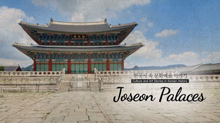 Joseon Palaces08:46
Joseon Palaces08:46 -
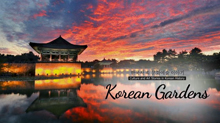 Korean Gardens08:34
Korean Gardens08:34 -
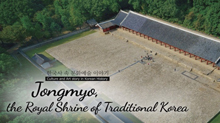 Jongmyo, the Royal Shrine of Traditional Korea09:05
Jongmyo, the Royal Shrine of Traditional Korea09:05 -
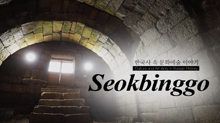 Seokbinggo, or Stone Ice Storage08:18
Seokbinggo, or Stone Ice Storage08:18 -
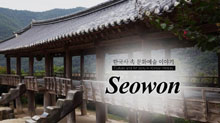 Seowon, a Neo-Confucian Academy08:22
Seowon, a Neo-Confucian Academy08:22 -
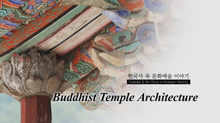 Buddhist Temple Architecture08:28
Buddhist Temple Architecture08:28 -
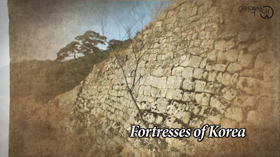 Fortresses of Korea09:12
Fortresses of Korea09:12 -
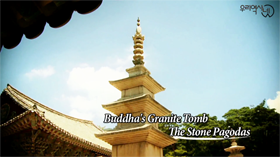 Stone Pagodas07:13
Stone Pagodas07:13 -
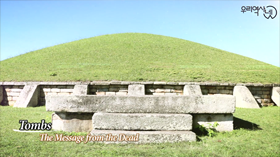 Tombs09:36
Tombs09:36 -
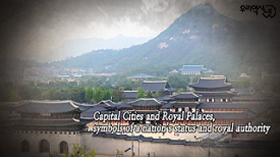 Capital Cities and Royal Palaces08:55
Capital Cities and Royal Palaces08:55 -
 Roof Tiles07:48
Roof Tiles07:48

